
9 minute read
WILDLIFE MADE ACCESSIBLE
WILDLIFE MADE ACCESSIBLE
Photos by Julia Cook and text by Jenn Gidman
You don’t have to look far in the national parks to find photo ops, as Julia Cook proves with her Tamron SP 150-600mm VC USD G2 ultra-telephoto zoom lens.
Wyoming native Julia Cook visited Yellowstone National Park more times than she could count as a kid, and those visits haven’t died down, even now that she’s a college student majoring in environment and natural resources at the University of Wyoming. These days, however, Julia always has a camera in hand during her trips to both Yellowstone and other national parks, creating wildlife images she hopes will inspire others to enjoy the great outdoors and respect the environment.
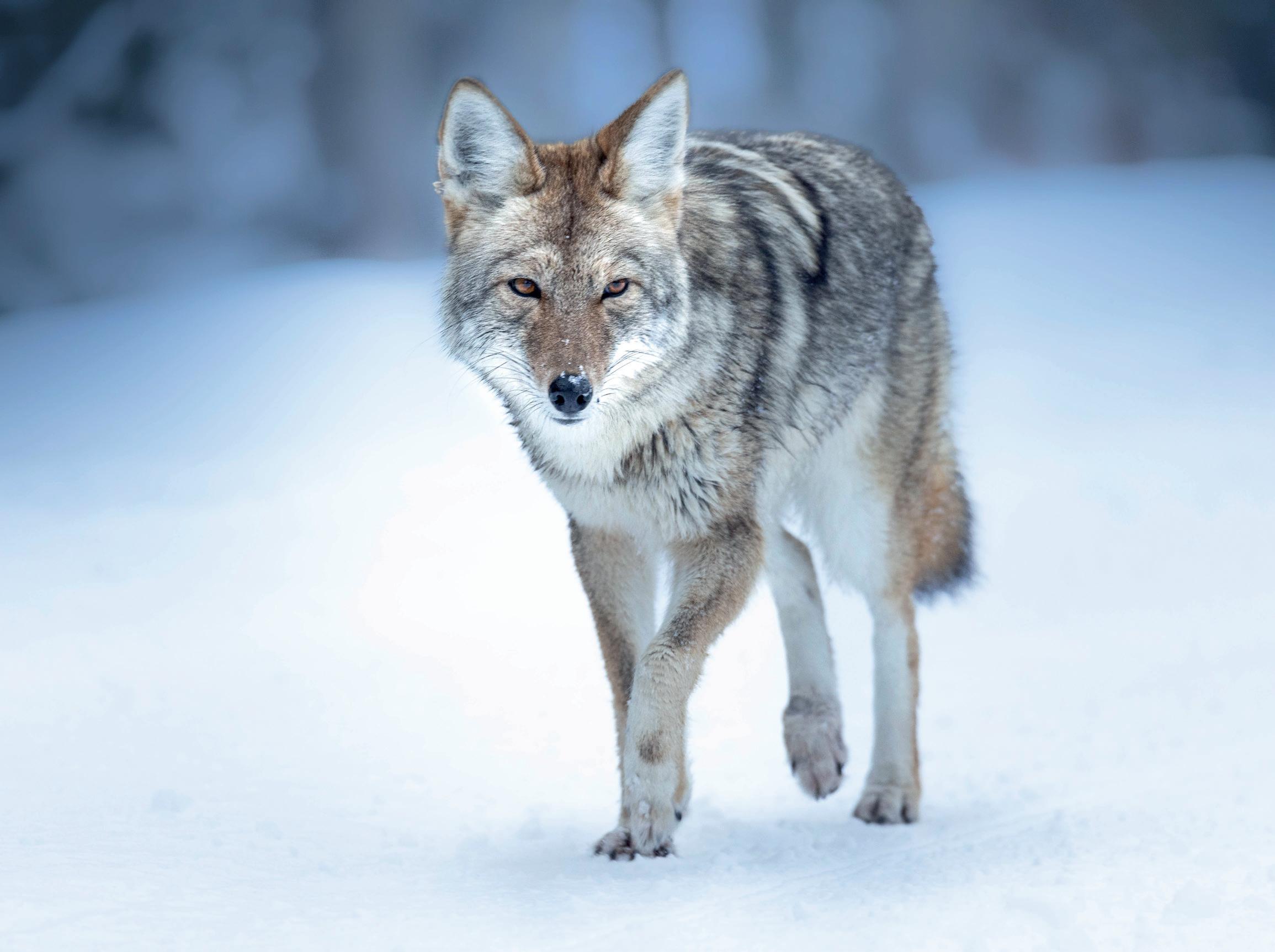
Tamron 150-600mm G2 | Focal Length: 500mm Exposure: F/6.3, 1/400 sec, ISO 1000
On her camera is the Tamron SP 150600mm VC USD G2 ultra-telephoto zoom lens, a photographic tool that offers her the range, portability, and image quality she desires, as well as the ability to remain unintrusive and safe. “This is the only lens I’ll take into Yellowstone,” she says. “My favorite thing about it is the variety of focal lengths at my disposal, as well as how lightweight it is, which is important when I’m spending all day in the park. I also couldn’t do without the Vibration Compensation (VC) feature, since I shoot handheld—I hate lugging a tripod around with me when I’m in the parks, and the VC minimizes camera shake, ensuring my images stay sharp. With the 150-600, I’m able to adapt as quickly as the animals move. If one suddenly darts in a different direction, I can easily move along with it without feeling restricted or that I’m missing photos.”
PHOTO TIPS: WILDLIFE IMAGES
1. Know the park’s safety regulations.

Tamron 150-600mm G2 | Focal length: 552mm Exposure: F/6.3, 1/400 sec, ISO 800
In the national parks, there are rules regarding how far you have to stay away from the animals, and you should get to know them well so you keep yourself and the animals safe. For bears and wolves in Yellowstone, that distance should be at least 100 yards, or 300 feet. I always try to think of it as, if I’m in one end of an end zone on a football field, the bear should be in the other end zone. It’s also important that you respect and listen to the park rangers.
2. Research the animals you plan on photographing.
I always think of wildlife photography as an intersection between art and science— because there is a science to knowing when the animals are going to be active. If you go out in the middle of the day, you’re probably not going to have the best chance of photographing a bear. It’s helpful to know a little about their environment and what their behavior might be. The more time you spend observing certain animals, the easier it becomes to predict what they’re going to do, which allows you to plan your photos accordingly.
3. Realize the best wildlife opportunities aren’t necessarily in the remotest parts.

Tamron 150-600mm G2 | Focal length: 191mm Exposure: F/5.6, 1/400 sec, ISO 1600 Note: see the full image of this cropped photo in Tamron Magazine Issue 13.
I don’t think that most people realize how accessible bear-viewing is in many of the national parks. In the photo of the bear strolling through the wildflowers in Yellowstone, it gives the appearance of being in some far-flung corner of the park, where nobody else is around. In reality, on the right-hand side of the frame, the road is maybe about 4 feet from the bear. People think you have to do a major hike through the backcountry to see bears, and that’s not the case.
4. Shoot from lower angles if possible, preferably at eye level.
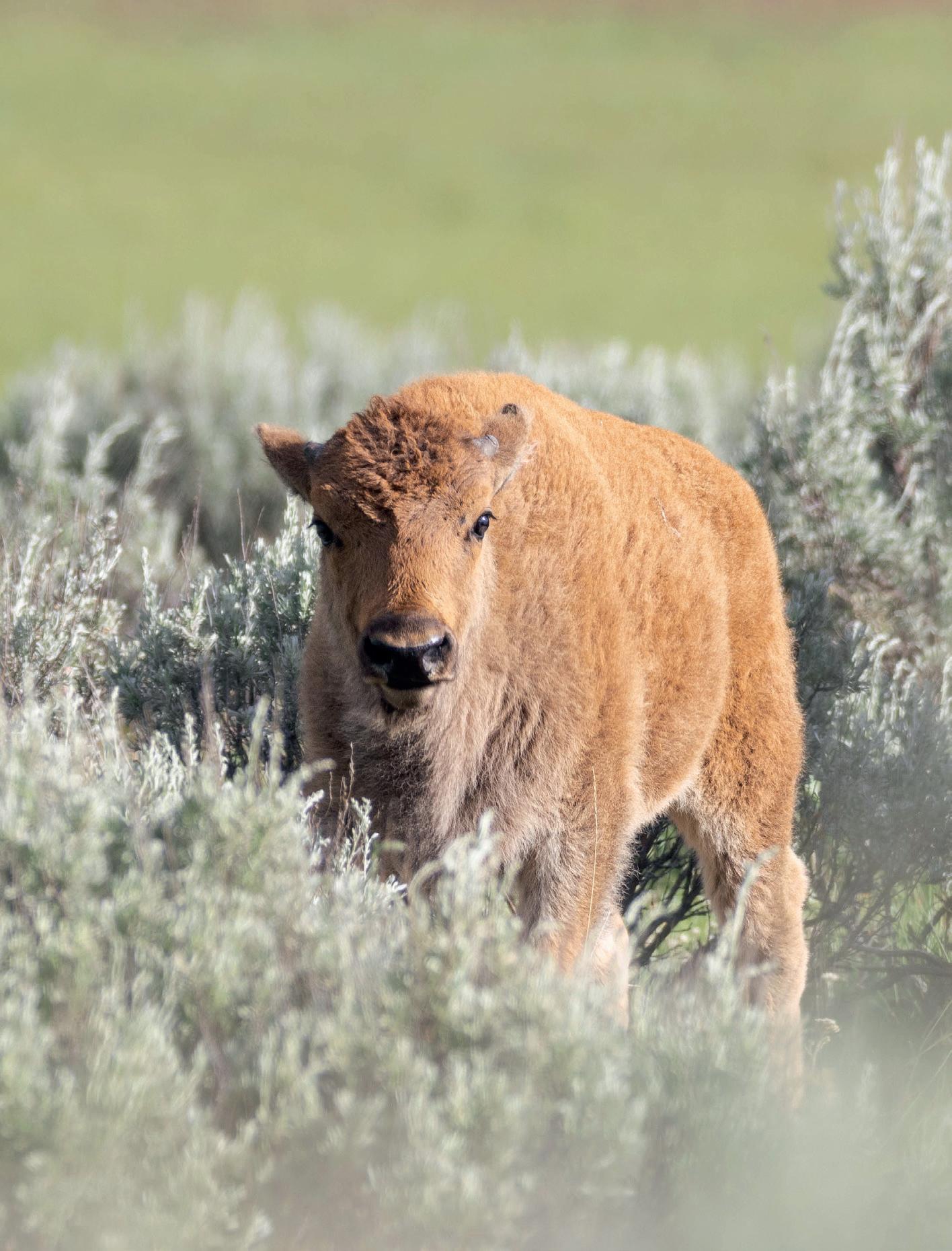
Tamron 150-600mm G2 | Focal length: 309mm Exposure: F/5.6, 1/640 sec, ISO 200
I would say that when I’m photographing wildlife, I’m kneeling or lying on the ground about 80% of the time. With the coyote photo you at the top of the article, I was on the ground in Yellowstone, fully on my stomach, trying to achieve a lower angle. Or, if there’s a distracting element obstructing my field of view, I’ll position myself directly behind it so it blurs out in the foreground. That’s what I did with the photo of the bison calf. If I’d been taking the picture from a higher angle, that sagebrush it was standing in wouldn’t have blurred out, and the photo would’ve been too distracting with all of the detail in the brush.
5. Blur out the background to keep the focus on the animal.
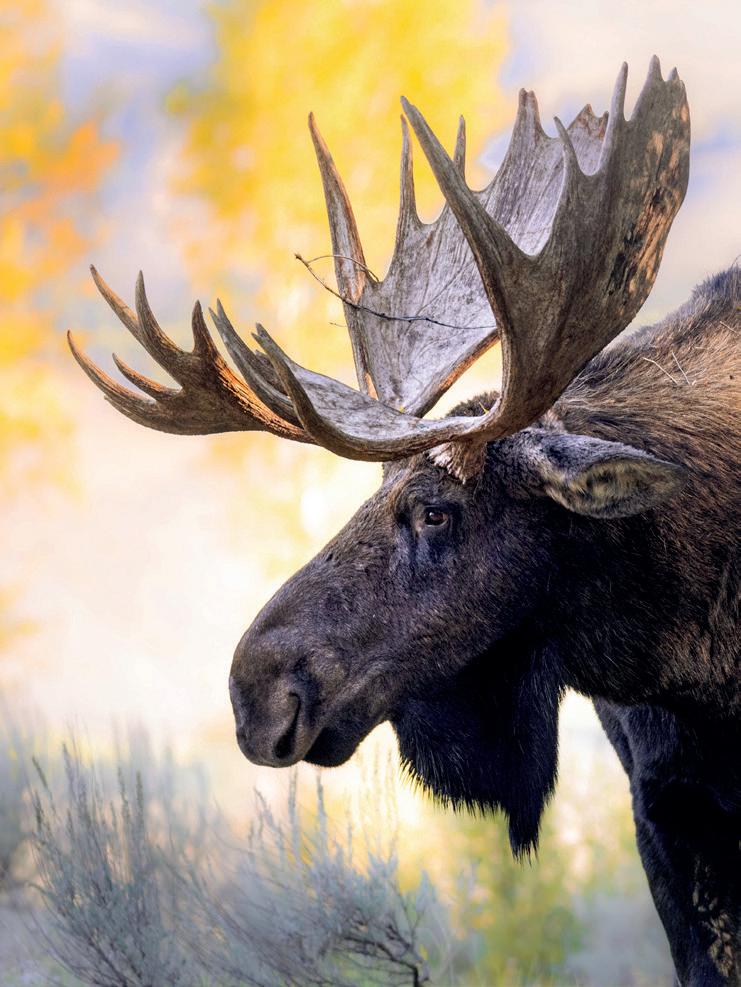
Tamron 150-600mm G2 | Focal length: 226mm Exposure: F/5.6, 1/320 sec, ISO 800
Most of the other photographers who were taking pictures of this moose in Grand Teton National Park were photographing him head-on, so he was directly looking at them. But what you can’t see here, due to the way I cropped my photo, is that there was a tree directly behind him that would’ve made for a super-busy picture. That’s why instead, I took a profile shot, where there was a lot of distance between the moose and the yellow aspens in the background. That distance helps blur out the background. In this case, it also provided an appealing, colorful canvas behind the moose.
6. Be unobtrusive and quick on your feet with birds of prey.
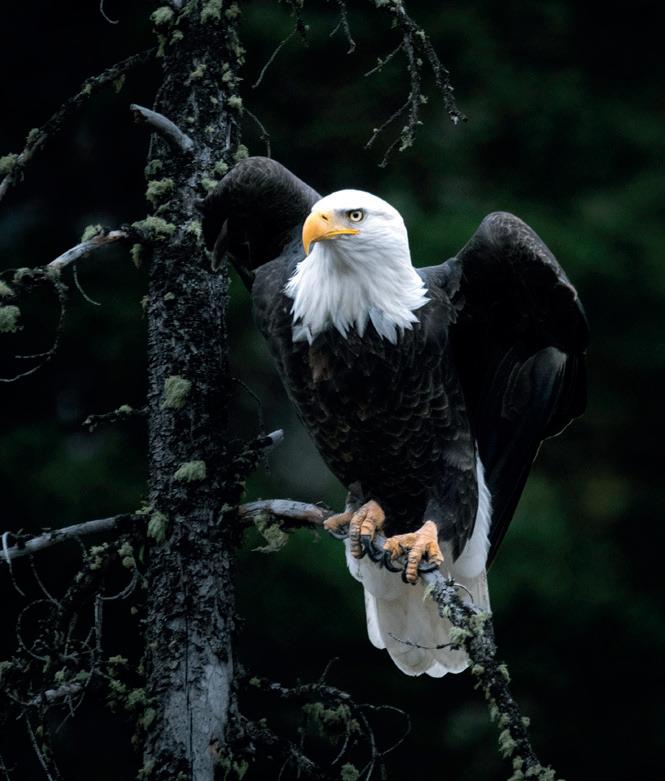
Tamron 150-600mm G2 | Focal Length: 500mm Exposure: F/6.3, 1/640 sec, ISO 1000
Raptors can be hard to photograph because they’re often skittish. I had seen the eagle shown here in Yellowstone land on a perch, so I pulled over to photograph it. The second my camera went up, however, the eagle took off. This is the only picture I managed to get, with its wings half-folded out and ready to go. With owls, however, you might have a better chance, especially if they’re often around humans and acclimated to them. Gray owls also tend to perch at eye level, which is definitely nice for photos. I tried to stay far enough away from this one, which is where the 150-600 came in especially handy. It didn’t seem bothered by me at all.
7. Keep an eye out for interspecies interactions.

Tamron 150-600mm G2 | Focal length: 483mm Exposure: F/9, 1/1600 sec, ISO 800
What’s interesting about wolves and ravens is that they have a symbiotic relationship, where they both benefit from a sort of cooperation with each other. In fact, ravens are often called “wolf birds.” If wolves see ravens circling in the sky, they’ll follow the ravens, because they figure there’s a fresh kill nearby. Meanwhile, ravens similarly follow wolves so that they can scavenge from the wolves’ kills. On this particular day in Yellowstone, the wolves had killed a deer early in the morning, and after they’d picked off most of the good meat, they receded up onto this ridge line. That’s when the ravens came swooping in for their turn. That’s what makes this photo so funny—you would think the wolf and the raven would be concentrated on each other, but they don’t even care. They’re both looking in the same direction, focused on the meal below.
8 Don’t discount a photo op because it doesn’t seem photogenic enough.
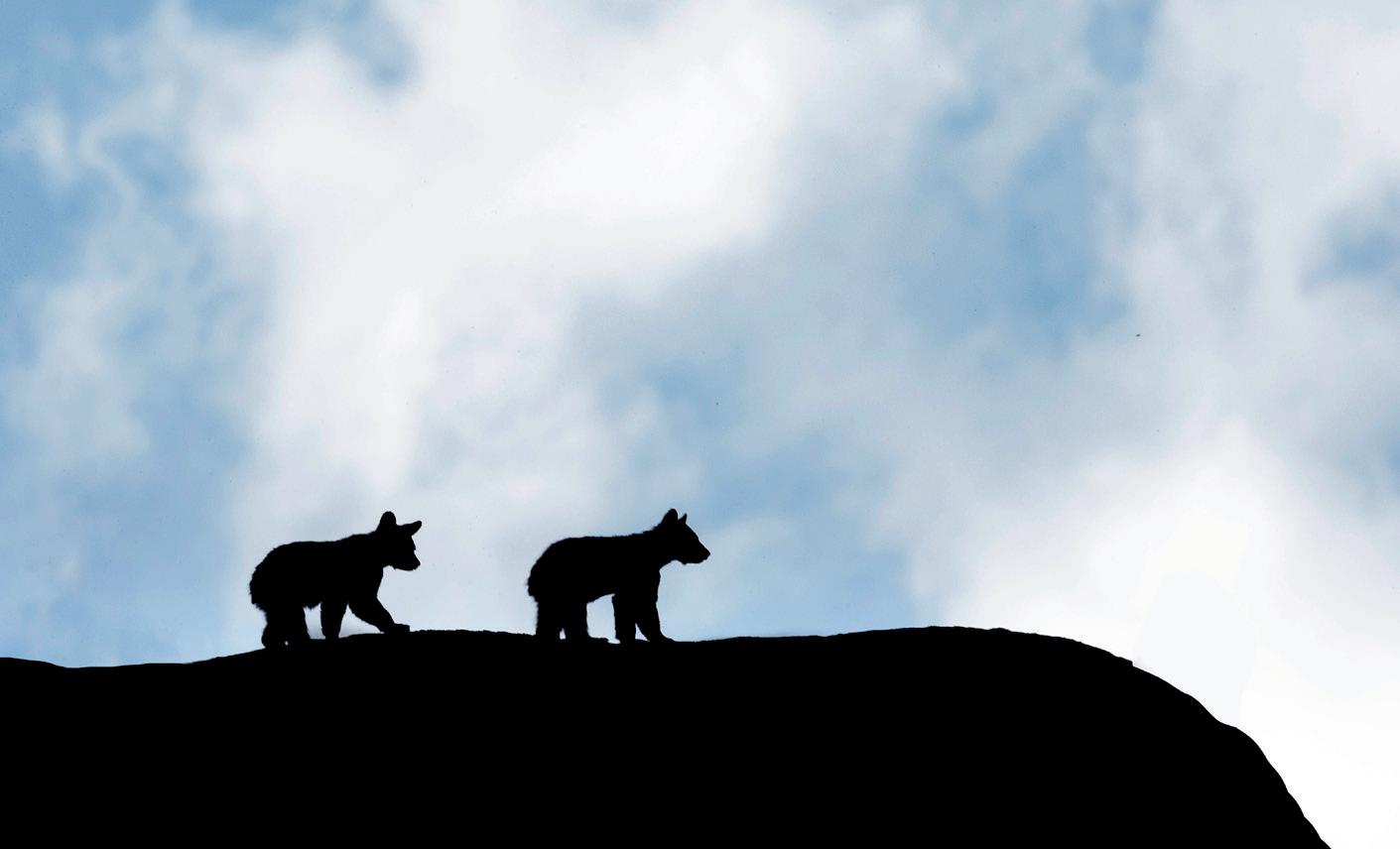
Tamron 150-600mm G2 | Focal length: 420mm Exposure: F/6.3, 1/640 sec, ISO 400
When I first spotted these black bear cubs and their mom in Yellowstone, they were really high up on a ridge in the middle of the day. The lighting was terrible, the brush was tall, and the cubs were so small that you couldn’t really see them. I think many people would’ve kept driving because it didn’t seem like a great chance to capture a photo. But I pulled over and waited just a little longer, and the cubs happened to walk up onto this boulder, where I was able to capture their silhouettes. Just because a scene doesn’t initially look promising doesn’t mean it won’t improve.
9. Always be ready for unexpected moments.
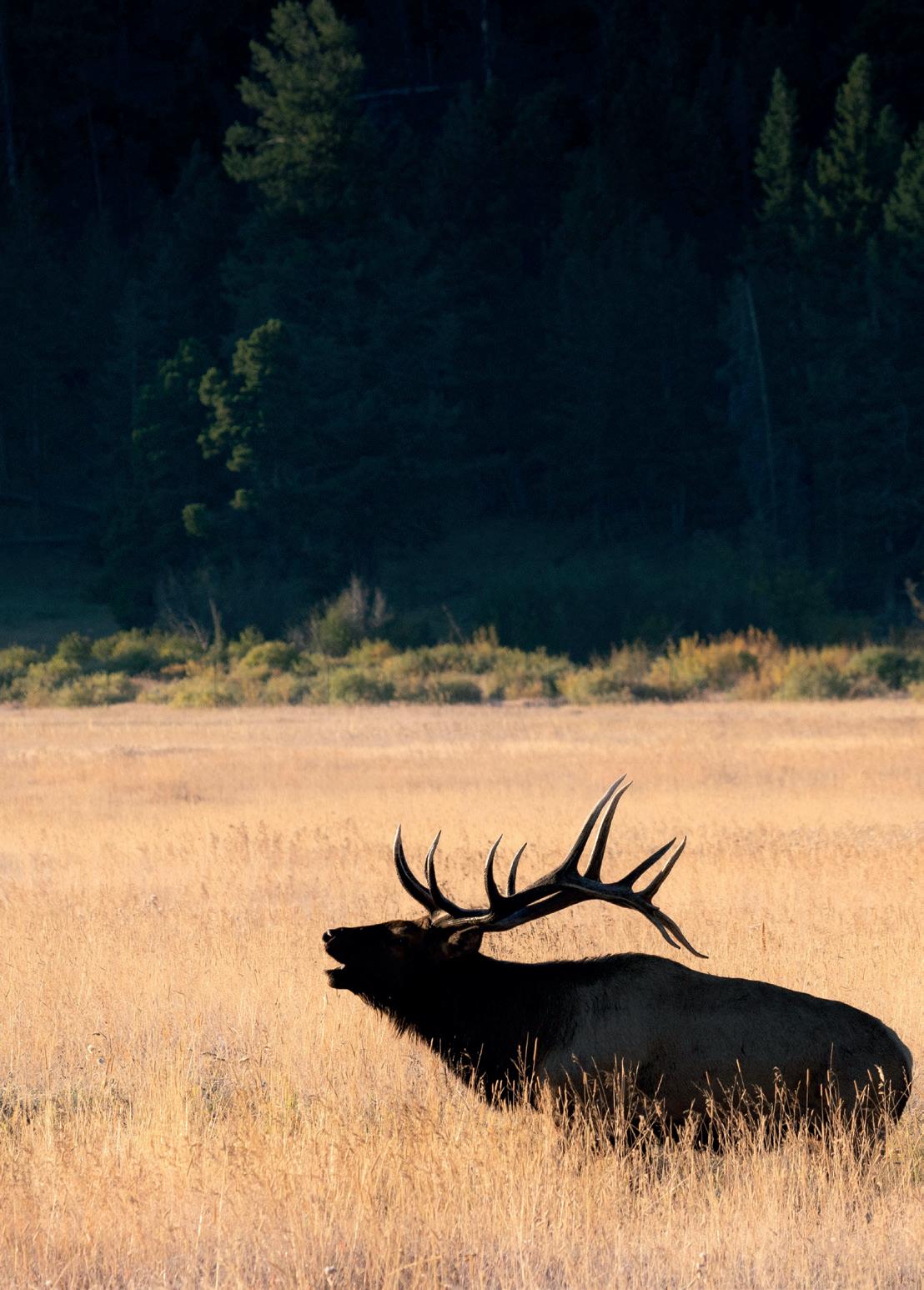
Tamron 150-600mm G2 | Focal length: 213mm Exposure: F/9, 1/400 sec, ISO 640
For my photo of an elk, it was my first time in Colorado’s Rocky Mountain National Park, which is known for its elk rut, or mating season. I was out of my element in this place I hadn’t been to before, and I had no idea what was going to transpire. Before the sun rose, nothing was happening; all the elk were bedded down. Then the sun came up and the light hit the meadow, and this massive-like bull elk just came out of nowhere and started bugling. The whole valley came to life, and bugling. The whole valley came to life, and all the elk started bugling back and forth to each other. I like the resulting image, with the lit-up meadow and the trees still shaded in the back.
ABOUT: JULIA COOK
Julia Cook is a wildlife photographer based in the Greater Yellowstone Ecosystem of Wyoming. Growing up in Wyoming surrounded by the outdoors, Julia developed a love for nature at an early age, which eventually led her to begin photographing wildlife; her wild subjects are her biggest inspiration. Julia spends most of her free time in Yellowstone photographing various species of wildlife, though grizzly bears are a favorite. Currently a senior at the University of Wyoming studying Environment and Natural Resources, Julia’s overall goal in photography is to capture impactful images of native wildlife that highlights their wilderness while inspiring others to enjoy nature in a meaningful way. When not photographing wildlife, Julia enjoys writing, traveling, drawing, and spending time with her lab Beach.




